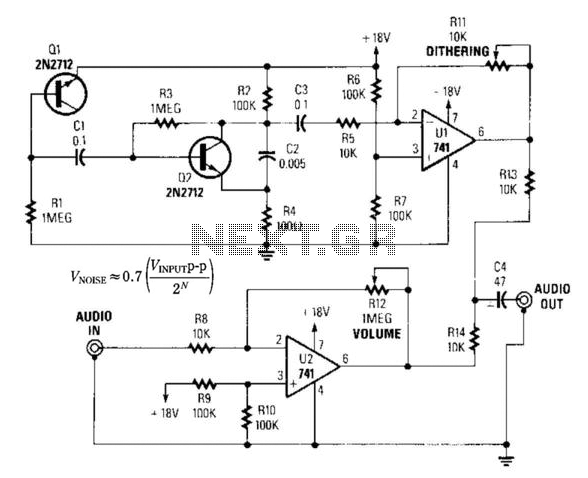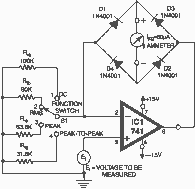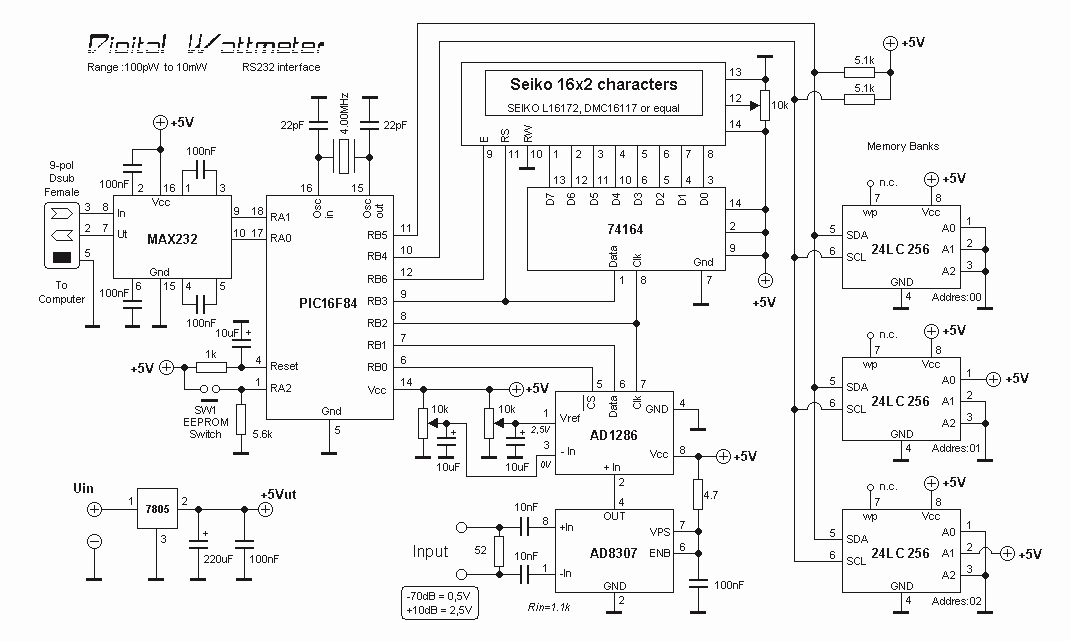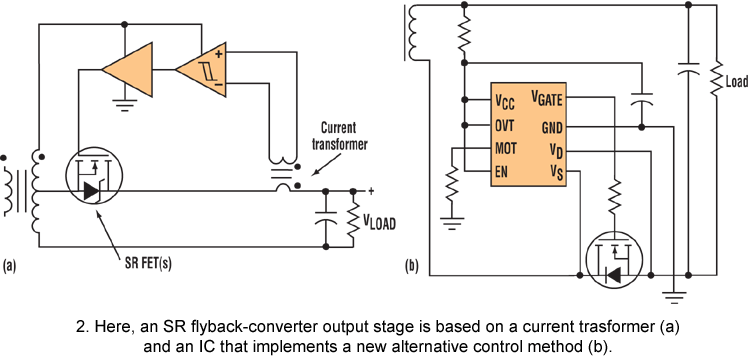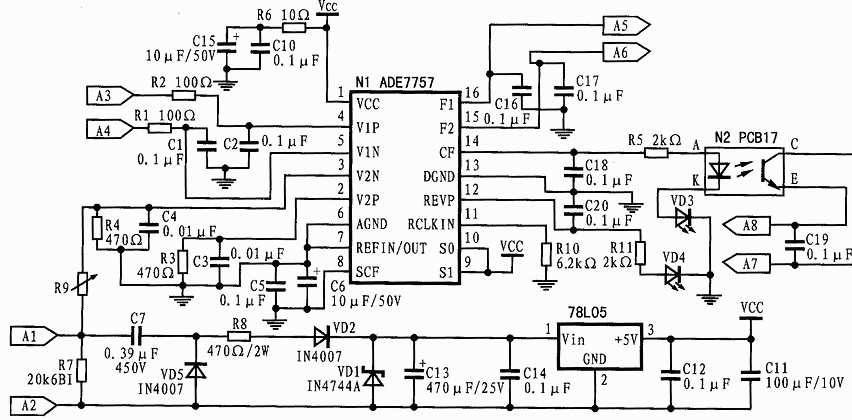
DIGITAL pH METER

The 3130 CMOS operational amplifier provides the necessary high input impedance for a pH probe at a low cost. The output of the probe varies from a positive generated DC voltage for low pH values to 0 V for a pH of 7, and negative voltages for high pH values. This output is amplified in a circuit that allows for gain adjustment to compensate for the temperature of the solution being measured. For analog readings, the output of the operational amplifier can be directly connected to a center-scale milliammeter through a 100K calibrating potentiometer. For a digital display that shows a reading of 7.00 for a 0 V output, the pH output is converted to a calibrated current that is summed with a stable offset current equal to 700 counts. This combined current is then fed to a current-to-frequency converter, which drives an appropriate digital display. Calibration is performed using standard pH buffer solutions.
The circuit employs a 3130 CMOS operational amplifier due to its high input impedance, which is critical for accurate pH measurements without loading the probe. The operational amplifier is configured in a non-inverting mode to amplify the voltage output from the pH probe. Gain adjustment is achieved through a feedback network that allows for fine-tuning based on the temperature of the solution, ensuring that the readings remain accurate across varying conditions.
The output from the operational amplifier is designed to cover a range of voltages corresponding to different pH levels, enabling a straightforward interpretation of the pH values. The analog output can be monitored using a milliammeter, which is calibrated with a 100K potentiometer, providing a visual indication of the pH level in real-time.
For digital readings, the circuit incorporates a current-to-frequency converter that translates the pH output into a frequency signal. This conversion facilitates the use of digital displays, which can provide precise numerical values corresponding to the pH levels. The offset current of 700 counts ensures that the digital display is calibrated to show a neutral pH of 7.00 at 0 V, allowing for easy interpretation of the results.
Calibration of the system is achieved using standard pH buffer solutions, which helps in maintaining the accuracy and reliability of the readings. The entire design is efficient and cost-effective, making it suitable for various applications where pH measurement is essential.3130 CMOS opamp gives required high input impedance for pH probe at low cost. Output of probe, ranging from positive generated DC voltage for low pH to 0 V for pH 7 and negative voltages for high pH values, is amplified in circuit that provides gain adjustment to correct for temperature of solution being measured. For analog reading, output of opa mp can be fed directly to center-scale milliammeter through 100K calibrating pot. For digital display giving reading of 7. 00 for 0-V output, pH output is converted to calibrated current for summing with stable offset current equal to 700 counts. This is fed to current-to-frequency converter driving suitable digital display. Standard pH buffer solutions are used for calibration. -D. Lancaster, "CMOS Cookbook, " Howard W. Sams, Indianapolis, IN, 1977, p 347-349. 🔗 External reference
The circuit employs a 3130 CMOS operational amplifier due to its high input impedance, which is critical for accurate pH measurements without loading the probe. The operational amplifier is configured in a non-inverting mode to amplify the voltage output from the pH probe. Gain adjustment is achieved through a feedback network that allows for fine-tuning based on the temperature of the solution, ensuring that the readings remain accurate across varying conditions.
The output from the operational amplifier is designed to cover a range of voltages corresponding to different pH levels, enabling a straightforward interpretation of the pH values. The analog output can be monitored using a milliammeter, which is calibrated with a 100K potentiometer, providing a visual indication of the pH level in real-time.
For digital readings, the circuit incorporates a current-to-frequency converter that translates the pH output into a frequency signal. This conversion facilitates the use of digital displays, which can provide precise numerical values corresponding to the pH levels. The offset current of 700 counts ensures that the digital display is calibrated to show a neutral pH of 7.00 at 0 V, allowing for easy interpretation of the results.
Calibration of the system is achieved using standard pH buffer solutions, which helps in maintaining the accuracy and reliability of the readings. The entire design is efficient and cost-effective, making it suitable for various applications where pH measurement is essential.3130 CMOS opamp gives required high input impedance for pH probe at low cost. Output of probe, ranging from positive generated DC voltage for low pH to 0 V for pH 7 and negative voltages for high pH values, is amplified in circuit that provides gain adjustment to correct for temperature of solution being measured. For analog reading, output of opa mp can be fed directly to center-scale milliammeter through 100K calibrating pot. For digital display giving reading of 7. 00 for 0-V output, pH output is converted to calibrated current for summing with stable offset current equal to 700 counts. This is fed to current-to-frequency converter driving suitable digital display. Standard pH buffer solutions are used for calibration. -D. Lancaster, "CMOS Cookbook, " Howard W. Sams, Indianapolis, IN, 1977, p 347-349. 🔗 External reference
